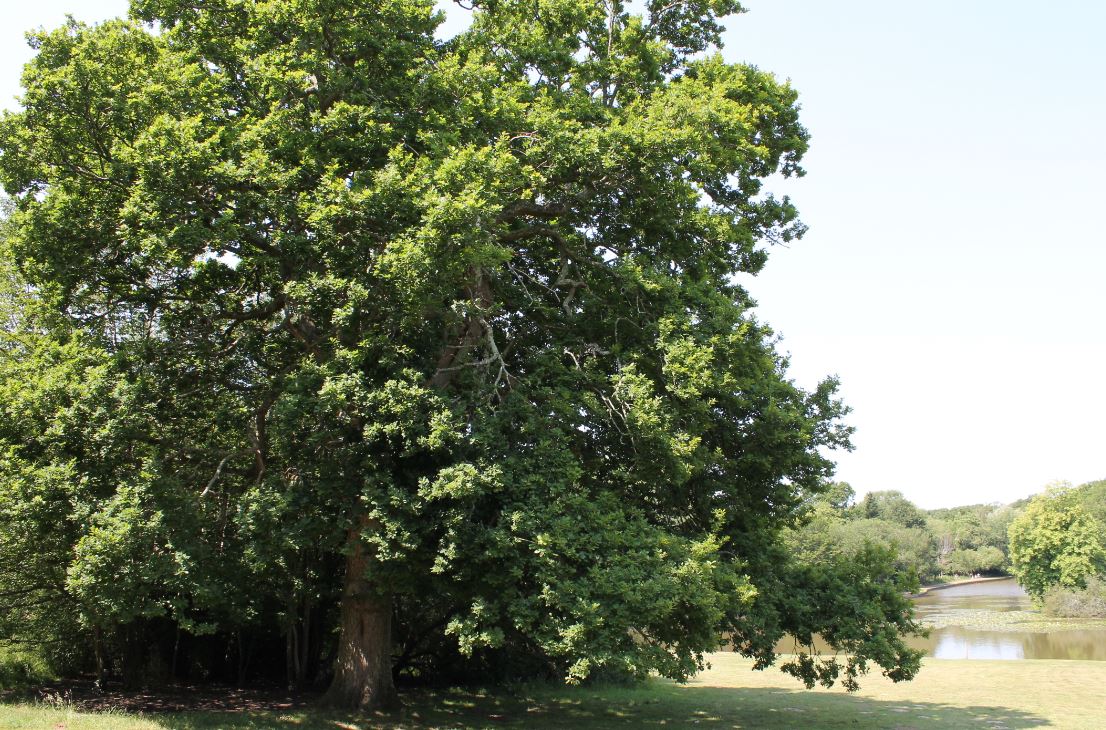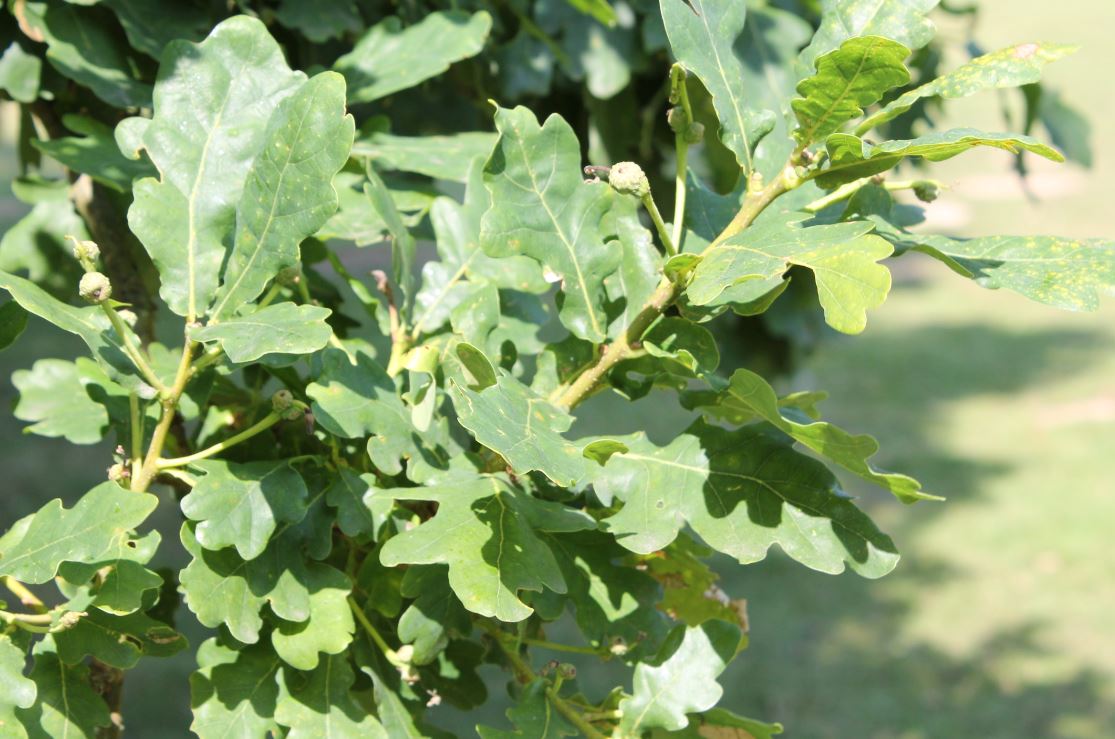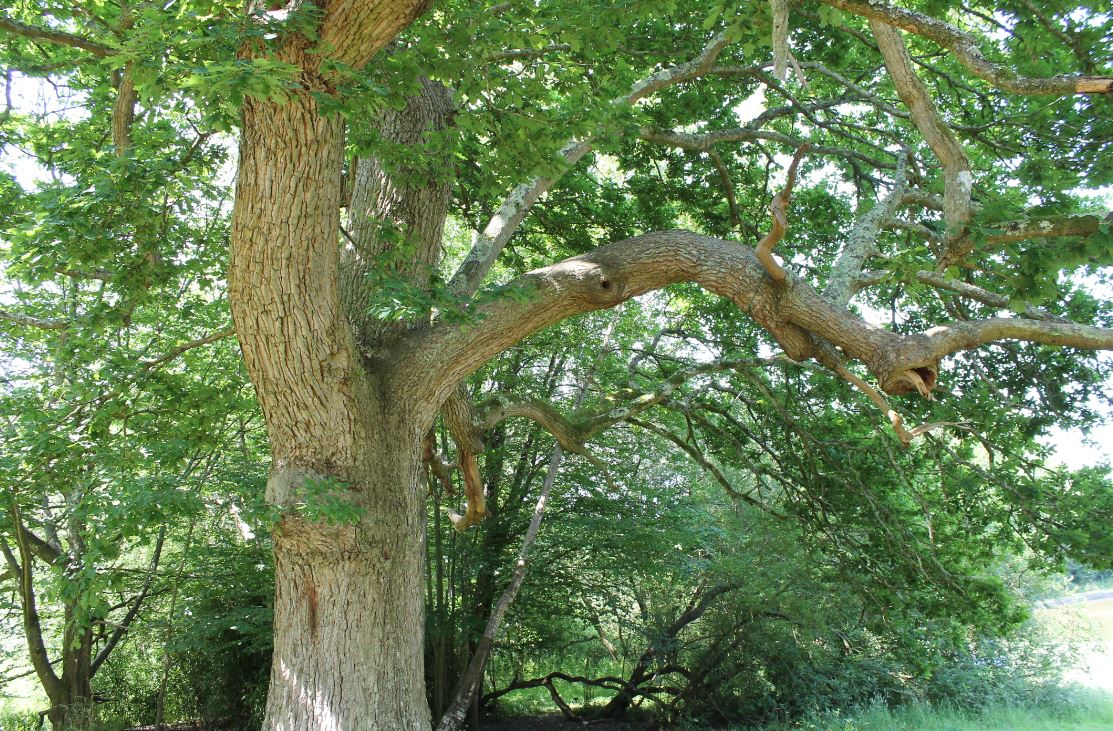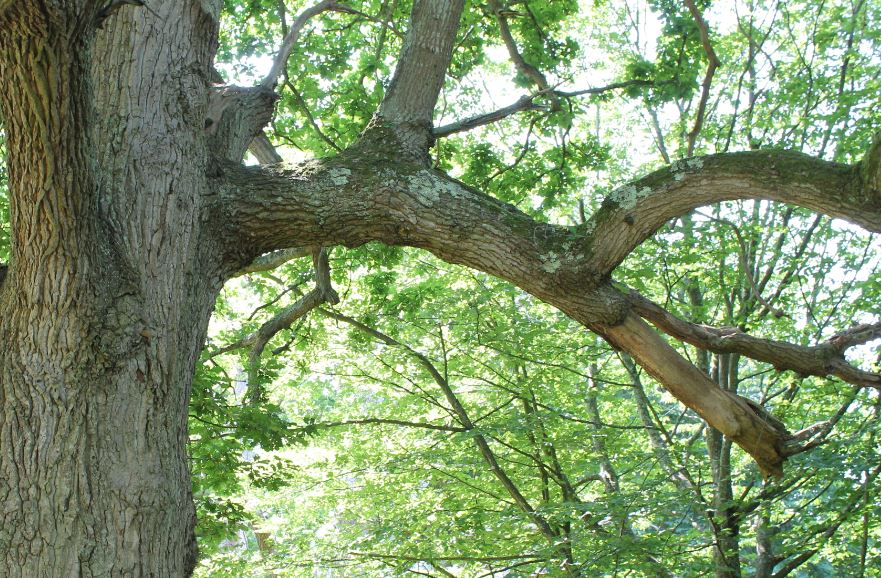Make sure your volume is on: "This tree won a war"
Show transcript
Oak is a native broadleaf tree. It is deciduous so it drops its leaves. Famously the acorn [good for acorn coffee] It is widely dispersed over the UK. What uses does it have? A lot of uses!
So the wood degrades very, very slowly, so it is fantastic for furniture, for beams, for building houses. And you will see a lot of the old 16th century houses are built of oak and are all still very, very strong and sturdy.
And all the ships used to be built of oak. It won the war, I believe, against Napoleon because Napoleon built his ships from French oak, which - when the cannonballs hit it - shattered into small pieces. But when the cannonballs hit the British ships it just made a solid hole and the ships held together - so it won the war!
During the shipbuilding era there were templates that they made to build the different parts of the boat. And so foresters would to out with these big templates with a big curve, and they would cut it out of the trunk and maybe one major branch. And they would specifically, in Henry VIII's time and before, they were pruned to create these shapes for the boats. So a very special tree.
It is very good for wildlife as well. Well, the classic saying that it grows for two hundred odd years and then it falls apart for two hundred odd years. So you get a lot of nooks and crannies. Get a lot of rot. So you get a lot of nesting birds, a lot of invertebrates, you get a lot of fungi. In terms of ecology it has the highest biodiversity of any tree in the UK.
This has got to be at least two hundred years old. The lichen growing up the branches – that alone tells you how old it is. Because a lichen will only grow in one place over a very long time. For it to be as widely spread as this just shows how old it is, really.
Though this tree looks extremely healthy, there’s a few deadwood branches. But nothing to say it is going anywhere.
A professional arb guy will come and inspect it - annual inspections. Daily we are looking at all the trees within the parkland looking for signs of stress. That might be dieback of the crown, it might be fungi bodies growing. And these are all things that the rangers are always daily keeping an eye, looking at the health of the tree.
Being in a high-risk public area, we need to make sure that nothing is going to fall on anyone any time. The guys are consistently looking for defects, although it may have a defect and we might not do anything about it. What we may do is instead of chopping the tree down, we may move the path. It has a lot more value to the environment standing up there than on the ground!



